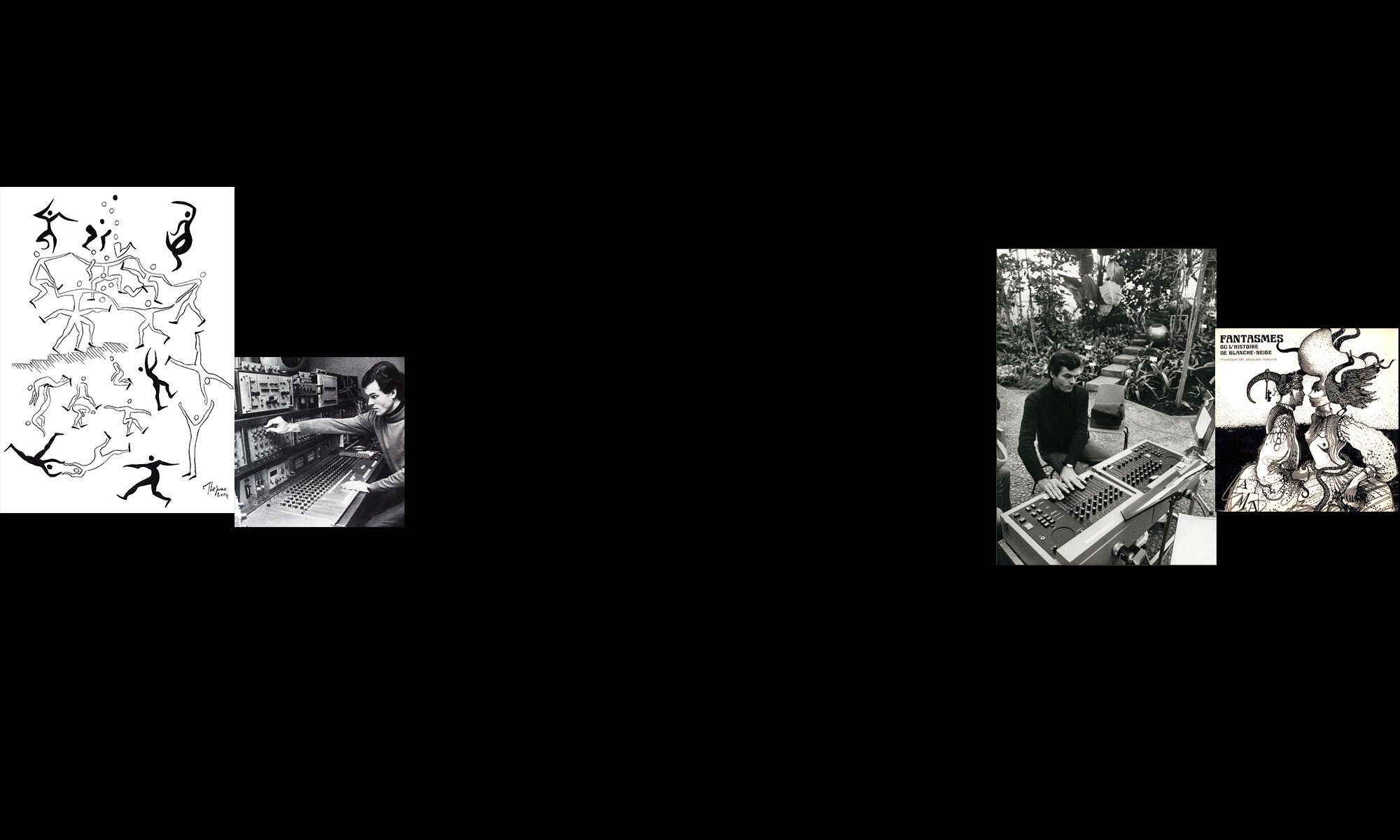I have been working on this new project on “interwoven languages”, since the year 2000 and I am continuing my present and future creative work in the same way, and also revisiting that of the past. I do not, however, consider myself a full-fledged poet or line artist as you cannot improvise a job that requires a lifetime. Besides, these textes and illustrations are confined, apart from a few exceptions which may lead to other pieces, to my musical work. and I answered along these lines in a recent interview (Portrait polychrome n°9) ” …they are developments or metaphores that help me to push back the limits of my imagination…”. So, I am simply a composer who has developed this other way of diffusing his music on speakers acompanied by images and projected poems.
 However, this new form cannot only be a mechanical video-musical product, decorative illustration of one genre by another. For me, it is always the music that leads the musical fable, all the while taking into account the reflections that spring from the use of the other “languages” that are woven into it. By superimposing these three registers, you become aware of the gaps in pace, framework, echo and meaning which leads to independence or affinity when they meet (which can only arise at certain locations in the space-time of the musical action).
However, this new form cannot only be a mechanical video-musical product, decorative illustration of one genre by another. For me, it is always the music that leads the musical fable, all the while taking into account the reflections that spring from the use of the other “languages” that are woven into it. By superimposing these three registers, you become aware of the gaps in pace, framework, echo and meaning which leads to independence or affinity when they meet (which can only arise at certain locations in the space-time of the musical action).
This interweaving of visual and aural games takes the imagination to a new complexity, towards a new act in my quest for modernity.
When a text that is recited or set to music is already present in the piece, the projected poem is then either superimposed (Berceuse pour un enfant de Palestine, Chansons des doigts de la main…) or distanced in terms of theme and form (Le Cantique des Cantiques, Fragments gourmands, Chansons loufoques…) so as to open up more to theatrality or poetic meditation. It sometimes even takes on a contradictory (Messe aux oiseaux, Ave Maria…) or nonsensical role (Clin d”oeil à Jean de La Fontaine, Chansons zoomorphes…).
Furthermore, where the texts are indissociable from the music, the pieces may be presented as live shows with actors and more elaborate stage settings (La Ronde des animaux…).
As for the notion of “able”, there are two meanings : one as concrete material before it really becomes music, like the Greek fable representing mythological fiction out of which the theatre gradually grew ; the other, as the structure of both the signified and the signifier of the musical fable (music with or without text as well as poems and drawings relating to it).
